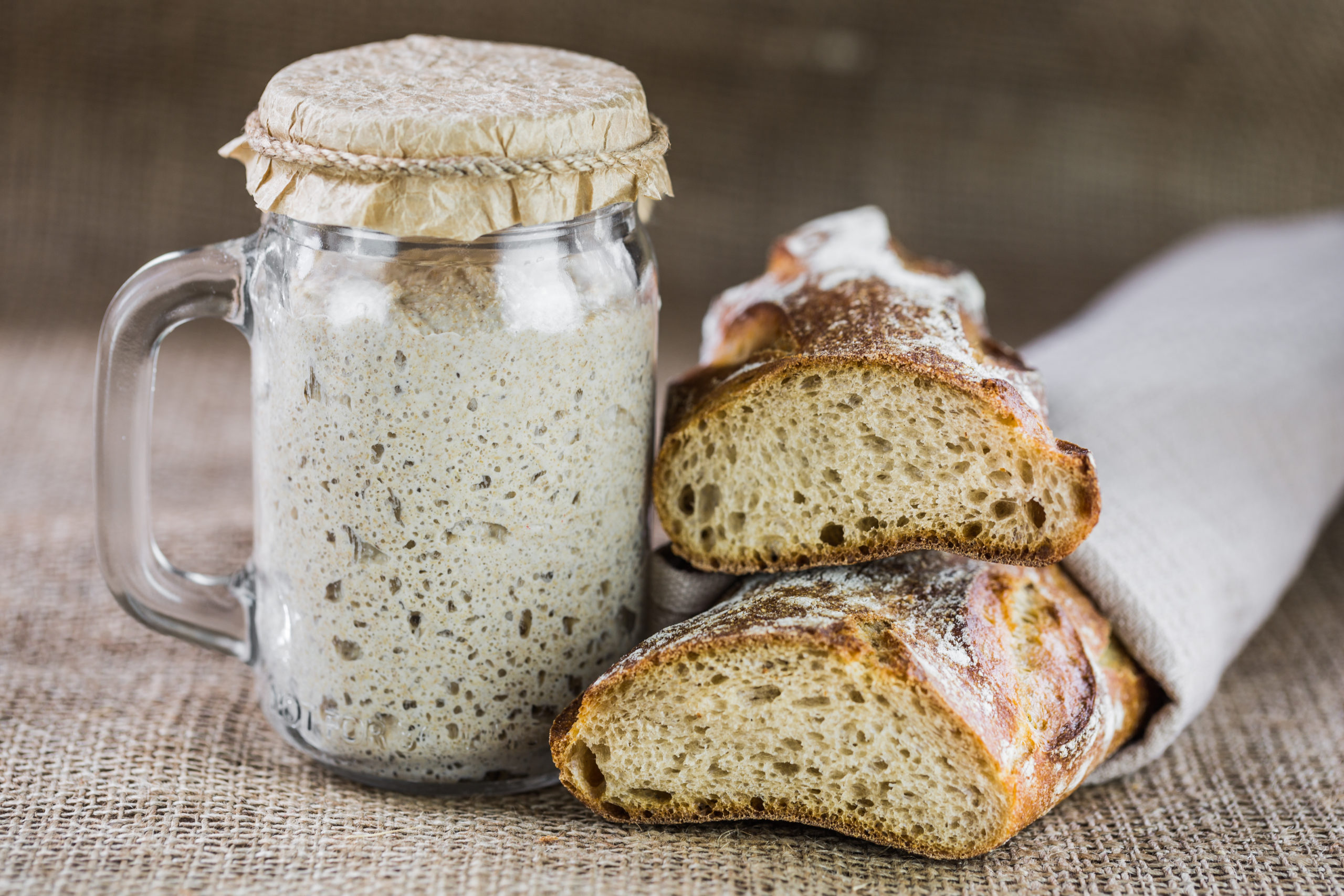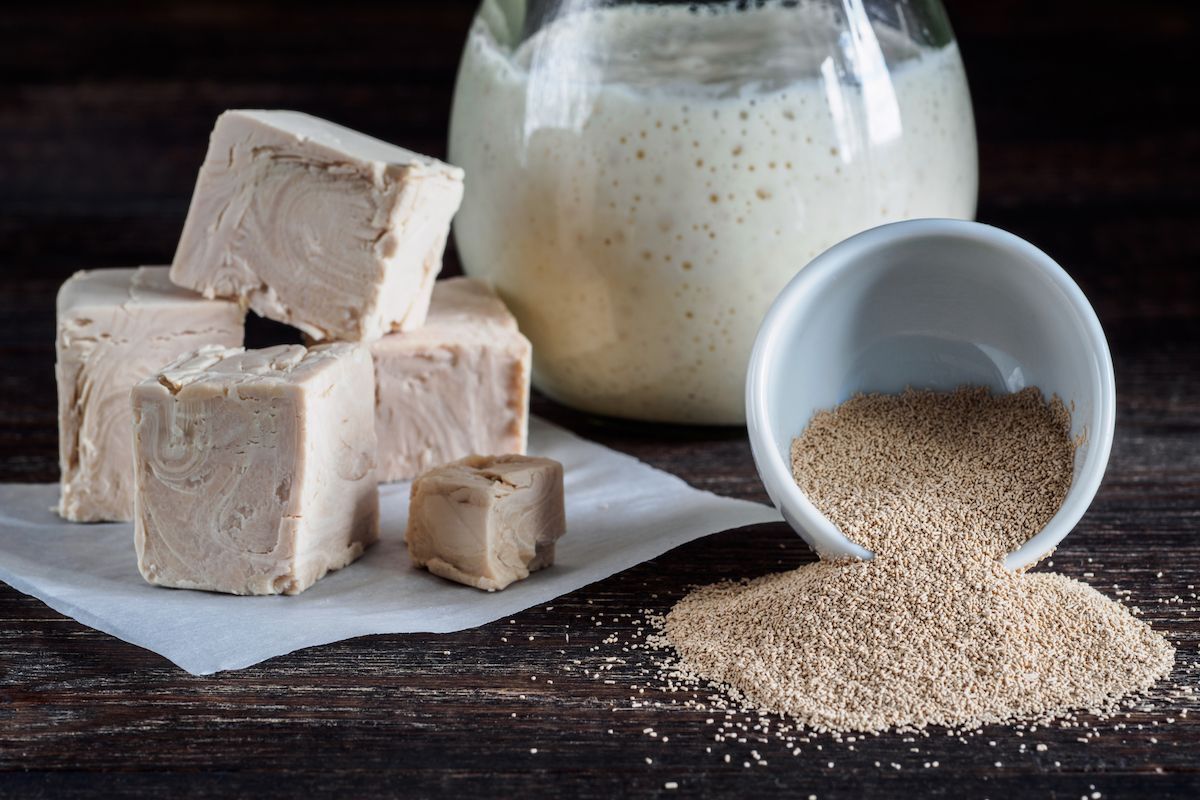
Home-made sourdough starter.
How to make and maintain your own sourdough starter.
What is sourdough starter?
The sourdough starter (or mother yeast) is a compound obtained by a fermentation of a mixture of water, flour and raisins.
In this ecosystem, live microorganisms such as yeasts and lactic bacteria feed on simple and complex sugars and produce carbon dioxide, lactic acid, acetic acid and ethanol, all essential elements for baking. It is mainly used for giving bread a tangy flavour, but you can also prepare rich pizzas, focaccias, desserts with it.
Sourdough starter vs brewer’s yeast
- Sourdough baked goods last longer because their acidity prevents them from developing mould.
- Sourdough bread or pizza have open crumb texture.
- Sourdough baked goods have a more acidic taste and richer aromas due to the action of various bacteria (lactobacilli) inhabiting the starter.
- Sourdough bread or pizza is more digestible because bacteria break down complex molecules into simpler and lighter substances.
- You can also enrich sourdough with butter and eggs for preparing croissants, panettone, brioche unlike brewer’s yeast that is not a good choice for making leavened sweet breads.
METHOD
- Put some raisins in a jar, add water and leave for two to seven days to macerate.
- Strain the water, put 100 g of flour into a bowl, then add 50 g of the raisin water.
- Knead the dough by hand for ten minutes until it is smooth and silky.
- Leave the covered dough to rest in a warm, dry place.
HOW TO REFRESH THE SOURDOUGH STARTER.
- Weigh the sourdough starter.
- Add an amount of flour equal to the weight of the starter.
- Add a quantity of water equal to half the weight of the starter.
e.g. If the sourdough starter weighs 200 g, just add 200 g of flour and 100 g of water.
In the first two weeks, repeat the process every two days, leaving the covered starter at room temperature in a dark, dry spot (for example inside the kitchen oven).
After two weeks, feed the starter again and leave it in the fridge in an airtight glass jar.
From now on, you can feed your starter once a week to use it for your future recipes.
SOME HANDY TIPS:
- To prevent your kitchen from being overwhelmed with starter, add 150-200 g each time and remove the remainder of it for making your recipes (ONLY AFTER the first two weeks).
- Give the sourdough starter to your family and friends, explain how to keep it active and issue a challenge to them.
- Sourdough goods must rise for at least 12 hours.

Home-made brewer’s yeast
What is brewer’s yeast?
Brewer’s yeast is a mixture of fungi of the genus Saccharomyces used as a ferment in the manufacturing of beer and wine. It’s available fresh (in blocks) or dried.
Brewer’s yeast vs sourdough starter
- When using brewer’s yeast, you can expect your pizza or bread dough to rise faster.
- If you use brewer’s yeast, you will need a lot less of it than sourdough starter.
- It is commonly found in all supermarkets, especially the dry one.
Online, you can find plenty of articles on how to make brewer’s yeast at home, but a key aspect is often overlooked.
We strongly recommend using an unfiltered, unpasteurised craft beer and that’s not easy to come by unless you are a microbrewer.
METHOD
Here’s how to get one 25 g brewer’s yeast block: Mix 50 ml of unfiltered, unpasteurised beer, ½ tablespoon of flour and ½ tablespoon of sugar. Let the starter sit for 12 hours at a temperature of 22 °C.


